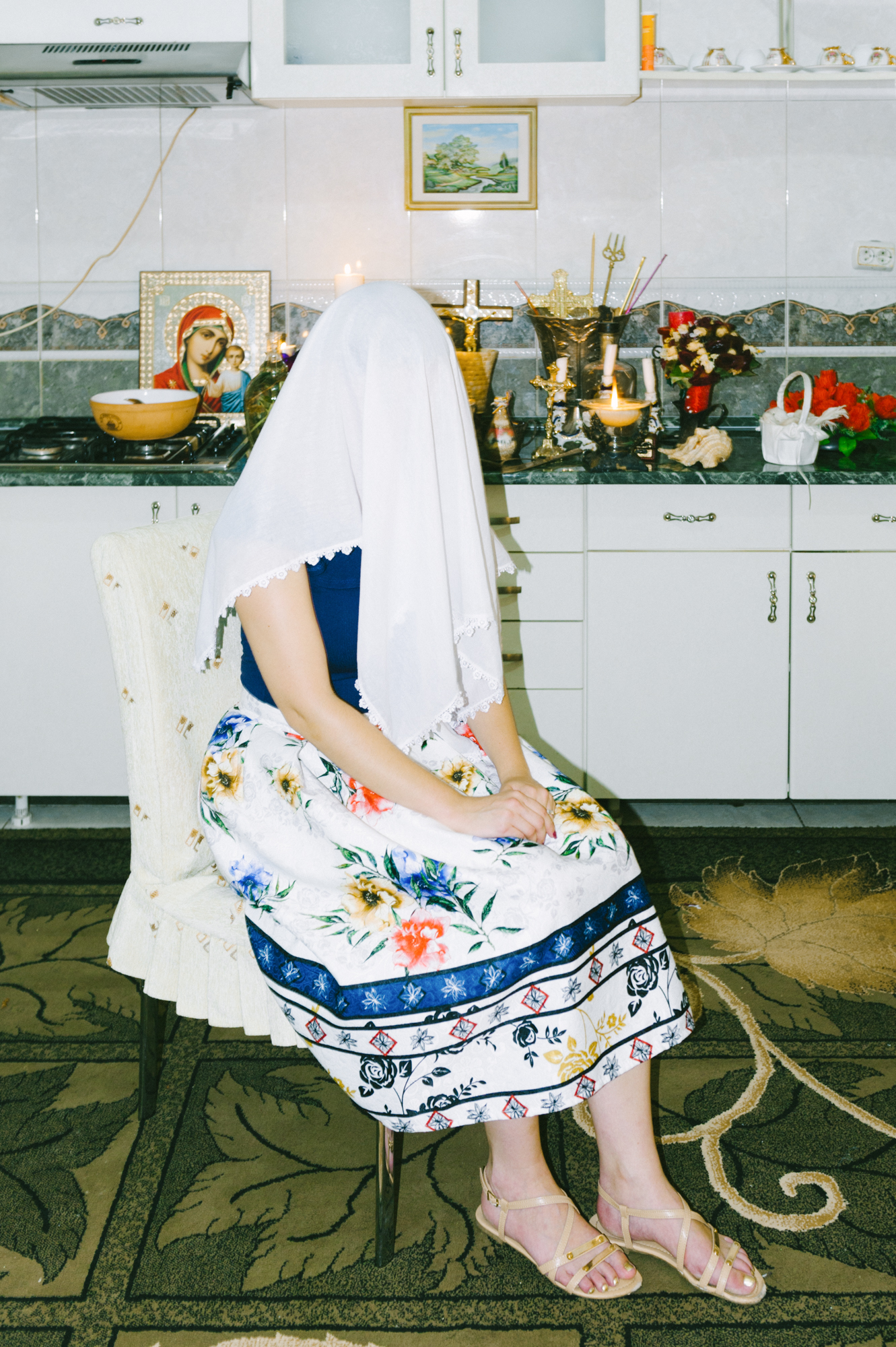Photographer Lucia Sekerková always preferred art to advertising, but she only ended up pursuing a life behind the lens after coming across an online video of a Romanian witch named Rodica Gheorghe. At the time, Sekerková was an advertising photography student on an exchange program in the former USSR state. “I was fascinated with the wealth which surrounded her,” Sekerková tells Broadly. “I started asking myself if it was the result of her work as a witch.”
This internet encounter led to Sekerková’s photography series, Vrăjitoare, now on display at the Museum of Romani Culture in the Czech Republic. In 2013, she started photographing Romanian witches and their rituals (“vrăjitoare” is a Romanian term for witches that can also refer to fortune tellers and healers). Most witches in the country are of Roma descent, and many Romanians believe Roma women can possess mystical and even supernatural powers that are passed down from generationally. “It is a bit of a stereotypical image,” Sekerková acknowledges.
Videos by VICE
Watch: An Arranged Marriage with Romania’s Teen Witches
She wanted to investigate these stereotypes by photographing real witches in Romania. “I decided to collaborate with the Slovak ethnologist Ivana Šusterová—she focuses on the everyday life and culture of Wallachian Roma people.” Vrăjitoare, accordingly, is a fusion of photography project and ethnographic study.
Growing up in a Christian family, Sekerková’s religious background had an important influence on her project. “I was interested in the strange split between Christianity and paganism in this witch world,” she explains. “Religion is one part of my identity and through photography, I try to understand it.”
Modernization has had a huge impact on witchcraft in Romania. Under the Communist regime, the practice of magic was forbidden and practitioners were arrested if caught. After the 1989 revolution and the fall of dictator Nicolae Ceaușescu, witches began openly offering magical services and fortune-telling. According to research conducted by sociologist Vintila Mihailescu, four out of ten people in the capital of Bucharest now consult a witch on a regular to occasional basis.

“A major reason for a large number of practitioners [which exist today] is the Internet,” Sekerková explains. “In particular, the live broadcasting of rituals is incredibly popular, though they used to be kept a secret. Now you can find ritual instructions and spells on witches’ websites or Facebook pages. Everyone can learn the practice and start their own business.”
Making an appointment with a witch is now quite easy, Sekerková explains. All you need is a grasp on Romanian and a phone. (Sekerková’s friend Diana Dobrescu assisted as an interpreter.) “You can find their phone numbers on their Facebook profiles or websites. All you have to do is call them and arrange a meeting,” Sekerková says. “Some of them are used to [being] visited by photographers or journalists from all around the world.”
In fact, Broadly followed one witch clan over the course of two documentaries. But Sekerková cautions that it takes patience to secure a fruitful meeting. “If you are not a potential client or you are not interesting for them, then it can happen that sometimes—like us—you will be refused.” One witch invited Sekerková to her house, only to unexpectedly demand $330 for the interview. “After we refused to pay her, she kicked us out from her house.”

The witches Sekerková met told her that they were motivated to use their special abilities to help people. But, at the same time, they warned of hustlers and scam artists. “The older ones told us openly that not all women who presented themselves as vrăjitoare had a ‘gift’ [and] not all of them learned it from the older generations within their respective families—[that] their activities were primarily motivated by the profit-mongering mindset.”
She didn’t want to take a position on whether these women were blessed with actual magical gifts—it wasn’t her place, she says. But just being around them gave her a sense of why their clients kept coming back. “They are extremely talkative and resourceful. They have a business spirit and talent for popular or lay psychology.”
For More Stories Like This, Sign Up for Our Newsletter
Sekerková photographed witches who helped women in crumbling marriages, assisted parents of children who suffered from nightmares, and counselled people through several failed relationships. She says that, whether you believe in magic or not, the women provided many clients with support: “In times of need, they can lighten the burden of responsibility, listen to them and even give them what they were lacking from their loved ones.”











